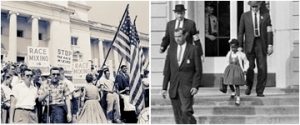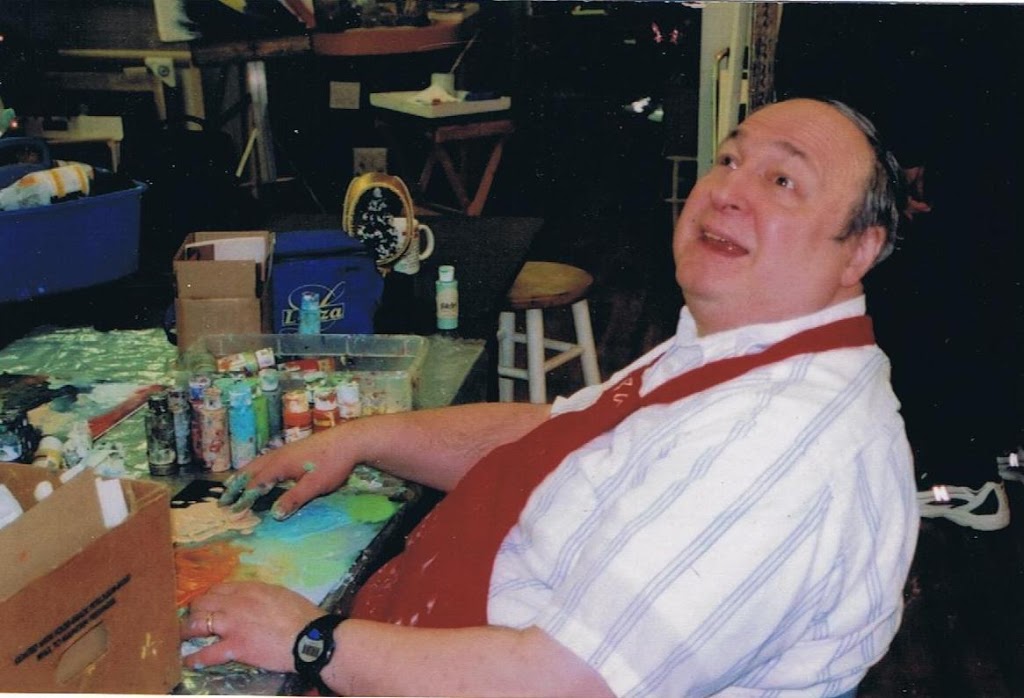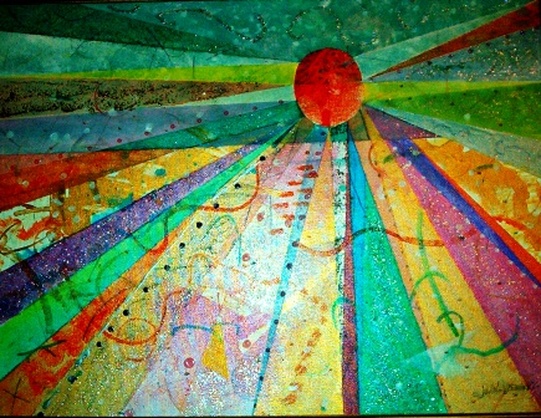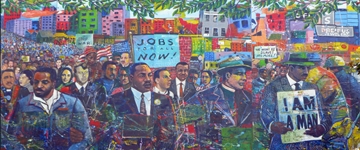 In addition to the many resources available from the UI&U Library, current students, faculty, and staff can request articles and book chapters using the library’s free Interlibrary Loan Service, ILLiad. With OneSearch, placing a request is easy. Just select “Request through interlibrary loan,” and OneSearch will fill in the citation information for you. Verify that the information is correct, and click Submit Request. If the library is able to borrow the article or book chapter, it will be delivered electronically to your email, usually within one week.
In addition to the many resources available from the UI&U Library, current students, faculty, and staff can request articles and book chapters using the library’s free Interlibrary Loan Service, ILLiad. With OneSearch, placing a request is easy. Just select “Request through interlibrary loan,” and OneSearch will fill in the citation information for you. Verify that the information is correct, and click Submit Request. If the library is able to borrow the article or book chapter, it will be delivered electronically to your email, usually within one week.
Note: The first time you use interlibrary loan, you will need to create an ILLiad account:
Now, you are ready to begin using Interlibrary services! From this page, you can view outstanding requests, submit requests, and update your contact information, if needed. Need additional assistance? Check out the library’s Interlibrary Loan FAQs or Contact a Librarian.
The development of open-access journals has been one of the most exciting developments in academic scholarship during the last two decades. Open-access journals are free publications that are available to everyone without hindrance of subscription fees, logins, contracts, or other barriers. They provide universal access to research and knowledge.

Access to this journal content has been facilitated by the development of open access databases, most notably the Directory of Open Access Journals (DOAJ). Maintained by the Infrastructure Services for Open Access, the database provides access to over 2 million journal articles from countries throughout the world. This is a multidisciplinary database with coverage in the arts, biology, business, environmental sciences, medicine, history, literature, mathematics, philosophy, and the social sciences. All journals are also peer-review or have editorial quality control, making DOAJ an excellent resource high quality, current research.
The Directory of Open Access Journals can be accessed from the databases link on the library homepage.
U.S. opinion is highly polarized on a number of different political and social issues. These opinions are often based on a person’s individual biases without having been researched thoroughly, or many factors having been taken into consideration. Critical thinking and civil political discourse, however, demand that we actively explore and consider alternative perspectives.
Whether you are researching a topic out of personal interest, or required to include an opposing perspective in an academic paper, the UI&U Library’s Opposing Viewpoints in Context database can help you find the information necessary to provide a sound basis for the perspective that you are investigating. The database includes topic pages on a variety of issues such as gun control, abortion, same-sex marriage, capital punishment, nuclear energy, immigration, and more. Each topic page includes opposing viewpoints, reference materials, historical background information, journal articles, and statistics that you can use to begin your research.

Protest Against “Race Mixing” and U.S. Marshals Escort Bridges
The Opposing Viewpoints database can be accessed from the UI&U Library’s all databases page (go to: library homepage > databases link > scroll to the Opposing Viewpoints in Context database).
“Sight is an amazing gift, and one which most of us learn from infancy, starting after birth when our eyes learn to focus. Through infancy, toddler years, and on into school years, our brains are trained to remember objects by how they look. The blind cannot do this. They use tactile sensations to identify and relate to everything.
When Shirl’s sight was restored, the visual overload was almost devastating. He had no idea what he was looking at and the task of learning it all was emotionally and mentally challenging, as well as a huge physical burden.
Barbara Jennings, Shirl’s wife, was determined that he could adjust to a life with sight and navigated unchartered waters to teach him everything – colors, alphabet, numerals, household objects, types of buildings and structural materials, trees and shurbs, animals, roads, railroads, airplanes, bridges, tunnels…the list was endless. There was always more for Shirl to learn.”- from atfirstsighthebook.com
 |
| Shirl Jennings creating art, courtesy of Barbara Jennings |
 |
| Sun and Rays by Shirl Jennings, courtesy of atfirstsighthebook.com |
Hispanic Heritage Month is September 15–October 15. This month’s featured videos, available from Films On Demand through UI&U Library, celebrate Hispanic culture, contributions, and history.
Habla y Vota is the fourteenth installment of HBO Latino’s award-winning Habla series, which comprises over 200 testimonials from U.S. Latinos – including celebrities, recognized professionals, and everyday Latinos – who’ve shared their funny, poignant, and honest stories about being Latino in the U.S. Featuring leading Latino celebrities and inspiring personalities and in order to raise the voice of the Hispanic community during the 2016 elections, Habla y Vota will be part of a bigger effort to reach Latinos and encourage voting in November. This one-hour non-partisan documentary special, in both English and Spanish, will feature Latino storytellers sharing their personal experiences directly to the camera for a national audience. -Films on Demand
Inner Borderlines: Visions of America Through the Eyes of Alejandro Morales
In April 2013, Spanish film maker Luis Mancha went to the University of California, Irvine to interview Alejandro Morales, an under-read Chicano author whose works present a vision of Southern California and America so different from the image that the United States projects abroad that Mancha felt compelled to make this documentary film. In it we follow Morales’ journey around Southern California as he tries to understand issues concerning the Latino population in California and the U.S. He and other Chicano/Latino academic experts discuss the first immigrants to California; how California was taken over by Anglo-Americans; how the city of Irvine came to be and its juxtaposition to Santa Ana; Barrios and “white flight;” Chicano literature; institutionalized racism and university barriers to ethnic studies programs; gang violence and the incarceration system; and future relations between the U.S. and Mexico. Also featuring Leo Chavez, María Herrera-Sobek, Francisco Lomelí, Belinda Campos, Raúl Fernandez, Mario García, Ellen McCracken, and Eleanor Guzman. -Films on Demand
An entrepreneur. A mayor. A mariachi. These are just a few of the remarkable Latinos who share their personal stories in Habla Texas. Filmed entirely in San Antonio and Austin, this one-hour, two-part special is an enlightening an entertaining look at the ups and downs, highs and lows of being Latino in the Great State of Texas. An HBO Production. -Films on Demand
This is the first major documentary series for television to chronicle the rich and varied history and experiences of Latinos, who have for the past 500-plus years helped shape what is today the United States and have become, with more than 50 million people, the largest minority group in the U.S. The series chronicles Latinos in the United States from the 1500’s to present day. It is a story of people, politics, and culture, intersecting with much that is central to the history of the United States while also going to places where standard U.S. histories do not tend to tread. Latino Americans relies on historical accounts and personal experiences to vividly tell the stories of early settlement, conquest and immigration; of tradition and reinvention; and of anguish and celebration, from the millions of people who come to the U.S. from Mexico, Spain, Puerto Rico, and countries in Central and South America. The programs are driven by the human dramas of individuals’ struggles and triumphs, successes and disappointments, featuring interviews with close to 100 Latinos from the worlds of politics, business, military, academia, literature, and pop culture, as well as deeply personal portraits of Latinos who lived through key chapters in American history. LATINO AMERICANS is the story of the gradual construction of a new American identity that connects and empowers millions of people today. -Public Broadcasting Series.
Films on Demand (all videos) ● academic success ● anthropology ● business & economics ● career & job search ● child & adolescent development ● criminal justice ● early childhood ● environmental science ● education (see also Education in Video) ● health, medicine, and wellness ● history ● leadership ● literature ● parenting & child development ● political science ● public health ● psychology & counseling (see also Counseling & Therapy in Video and Psychotherapy.net) ● social work ● special education
 August is National Breastfeeding Month. Did you know that you can access many videos on breastfeeding promotion and general maternal health & wellness from the library? This month’s featured video, “Breastfeeding Overview,” is part of the Newborn Care Series, and is available from Films on Demand. In this video, viewers will “learn some of the benefits of breastfeeding your newborn, how to properly hold him or her, and attach her to your breast” (publisher’s description).
August is National Breastfeeding Month. Did you know that you can access many videos on breastfeeding promotion and general maternal health & wellness from the library? This month’s featured video, “Breastfeeding Overview,” is part of the Newborn Care Series, and is available from Films on Demand. In this video, viewers will “learn some of the benefits of breastfeeding your newborn, how to properly hold him or her, and attach her to your breast” (publisher’s description).
Each video in this series is around 5 minutes long, and covers topics on newborn care such as safely installing a car seat, developing a healthy sleep schedule, and addressing common health concerns.
The UI&U Films on Demand collection includes over 52,000 videos, which can be streamed online and added to CampusWeb courses.
View More Videos
Films on Demand (all videos) ● academic success ● anthropology ● business & economics ● career & job search ● childcare ● child & adolescent development ● criminal justice ● environmental science ● education (see also Education in Video) ● health, medicine, and wellness ● history ● leadership ● literature ● parenting & child development ● political science ● public health ● psychology & counseling (see also Counseling & Therapy in Video) ● social work ● special education
Keep the Memory Alive!
Produced by Blackside, Eyes on the Prize tells the definitive story of the civil rights era from the point of view of the ordinary men and women whose extraordinary actions launched a movement that changed the fabric of American life, and embodied a struggle whose reverberations continue to be felt today. Winner of numerous Emmy Awards, a George Foster Peabody Award, an International Documentary Award, and a Television Critics Association Award, Eyes on the Prize is the most critically acclaimed documentary on civil rights in America.
Through contemporary interviews and historic footage, the 14-part Eyes on the Prize series traces the civil rights movement from the Montgomery bus boycott to the Voting Rights Act, and from early acts of individual courage through the flowering of a mass movement and its eventual split into factions. Julian Bond, political leader and civil rights activist, narrates. –American Experience, PBS.org

Delsarte, Louis. (2010). Martin Luther King, Jr. Memorial Mural [Mural]. City of Atlanta Office of Cultural Affairs, Atlanta. Retrieved from https://flic.kr/p/c7Fe8m Creative Commons BY-NC-ND. Image Cropped.